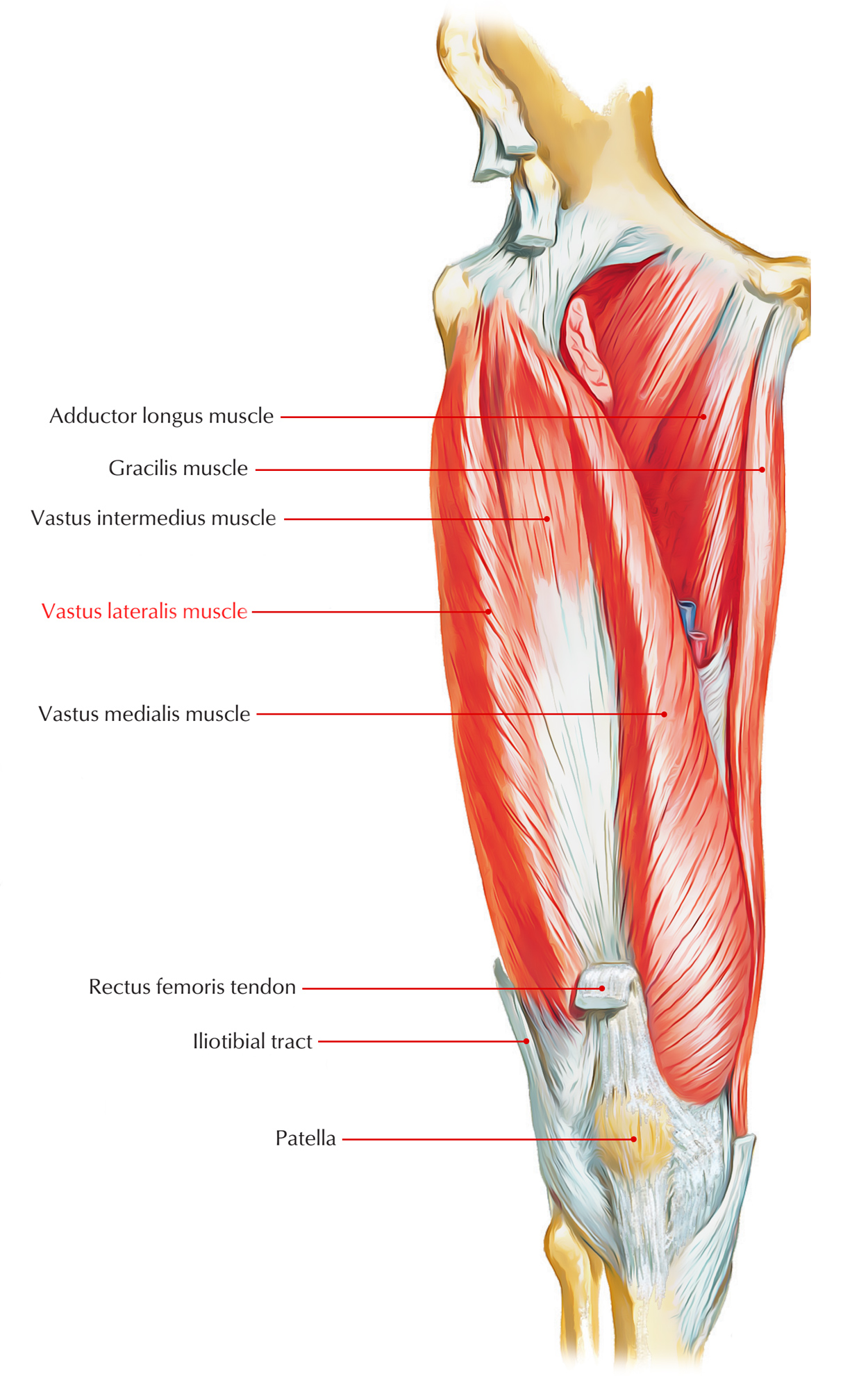The vastus lateralis, the biggest part of the quadriceps femoris, is a much bigger, much heavier muscle than is usually appreciated. Observed from in front, it is not outstanding; nevertheless, when viewed from the lateral side, its large extent emerges. Its large size is also evident in a random sample of the thigh; at a greater level it encompasses almost half the area of the femur.

Vastus Lateralis Muscle
Attachments
- Proximally, it is attached to the lateral side of the posterior part of the top three-fourths of the femur through an aponeurosis that encompasses the inner part of the muscle.
- The aponeurosis deep to the muscle connects distally to the lateral boundary of the patella as well as through the patellar ligament goes across the knee.
- A couple of fibers of the muscle connect to the lateral patellar retinaculum.
Insertion
Inside the lateral side of the quadriceps tendon, accompanying rectus femoris along with the other vasti muscles, covering the patella, afterwards by the patellar ligament within the tibial tuberosity.
Action
Elongation of the leg at the knee.
Structure
The vastus lateralis is among the muscles that comprises the quadriceps femoris, and is included in the anterior portion of the thigh. The muscles of the anterior portion are all stimulated by the femoral nerve and function normally to elongate the leg at the knee joint.
The four muscles that comprise the quadriceps femoris are the:
- Rectus femoris
- Vastus lateralis
- Vastus medialis
- Vastus intermedius
In addition to the quadriceps muscles, the Sartorius muscle is also found in the anterior portion along with the distal terminals of the iliopsoas muscles.
Clinical Significance
Symptoms Related to the Vastus Lateralis
- Knee pain
- Pain on the side of the thigh elongating down into the front and back of the knee.
- Pain under the buttock elongating towards the hip joint.
- Pain sometimes comes down into the back of the calf.
- Locked knee.
- Elongated walking boosts pain in the thigh and knee.
Pain Related to the Vastus Lateralis
The seriousness of the muscle strain is determined by the damage to the muscle and the quantity of blood drawn to the injury site. Strains are usually categorized as first-degree, second-degree or third-degree. A first-degree strain is thought about moderate due to the fact that just a few muscle fibers are torn, swelling is very little and little pain is connected with this kind of injury. A second-degree strain is thought about moderate due to the fact that a greater number of fibers are torn and also leg function is rather jeopardized. A third-degree strain is the most extreme. The whole muscle is torn, leading to a total loss of leg function.
Treatment
Long-lasting treatment choices differ depending upon the seriousness of the injury. Nevertheless, instant treatment with a first, second or third-degree strain of the vastus lateralis stays the exact same. Instantly use crushed ice to the outer thigh area, carefully compress the ice along with a tensor plaster and also elevate the thigh over the core to decrease swelling. Before other treatment, seek advice from a doctor for ideal healing.

 (66 votes, average: 4.20 out of 5)
(66 votes, average: 4.20 out of 5)